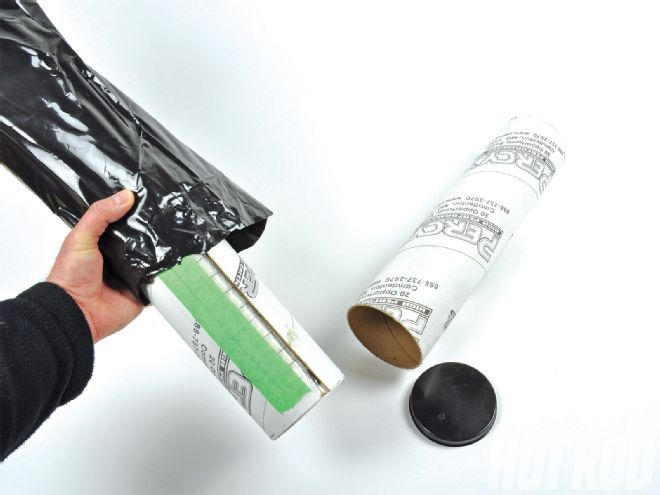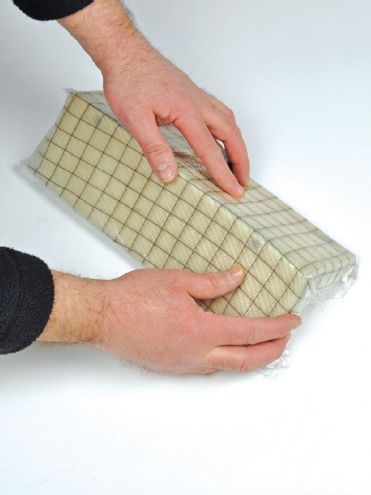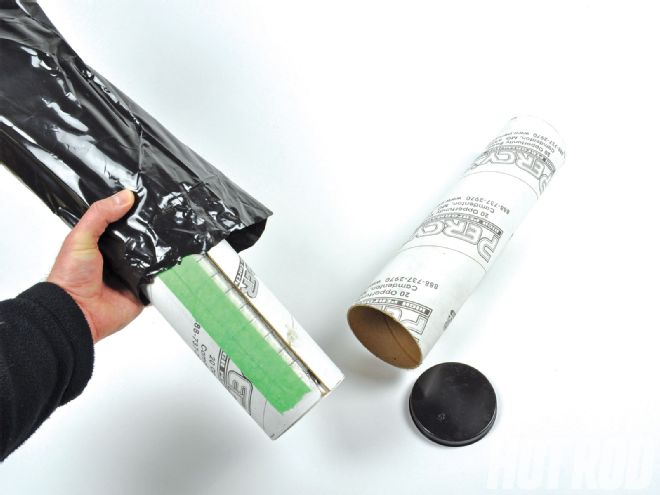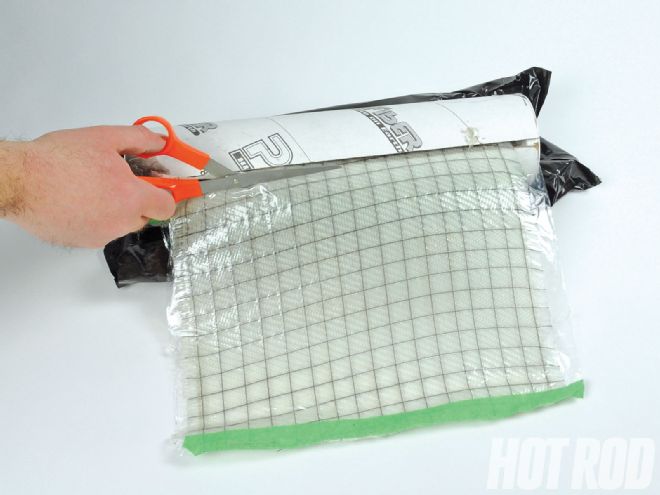
Sometimes we wish we were artists with sheetmetal. Sure, we can make a bracket and weld a floorpan in place, but we're in awe watching someone hammer and massage a flat piece of steel into a complex curved fender or custom engine cover. Guys who can do that are true craftsmen.

Since we are not in that category when it comes to working sheetmetal, we were pretty jazzed when we learned about a new product from Percy's High Performance. This is the company that has come up with great solutions to age-old problems, like its Adjust-A-Jet that lets you alter jetting in a Holley carburetor externally with a screwdriver and wrench. One of its new products for 2010 is HyperFiber, which gives anyone the ability to create custom parts like a pro.
HyperFiber is a fiber-weave material like fiberglass or carbon fiber. In fact, the weave type is 2x2 twill, which is exactly like carbon fiber. The difference is this weave is pre-impregnated with a resin that hardens in sunlight or ultraviolet light. If you have worked with fiberglass or carbon fiber, you know that mixing the resin in the right ratio and applying it to the fiber weave evenly is a pain. And the process is messy no matter how good you are at it. HyperFiber overcomes these challenges because the resin is already mixed and applied. It's held in place on the weave between two layers of dry film (plastic). Literally, you pull the amount of HyperFiber you need out of the box, work it into the shape you want, and the put it in the sunlight to cure.
 HyperFiber is a mesh material that comes with resin already mixed and applied. The resin hardens when placed in sunlight or ultraviolet light, so it comes packaged in a tube like a giant roll of film wrapped in black plastic and inside a second tube. You can work with it indoors under any type of artificial light.
HyperFiber is a mesh material that comes with resin already mixed and applied. The resin hardens when placed in sunlight or ultraviolet light, so it comes packaged in a tube like a giant roll of film wrapped in black plastic and inside a second tube. You can work with it indoors under any type of artificial light.
This sounded too good to be true, so we couldn't wait to get our hands on some to try. We experimented with the stuff, layering it, making various shapes, drilling it, and painting it. Finally, we tried our hand at making an actual part-a switch panel for one of our cars. But as you can see, the sky is the limit on all the different stuff you can make with it.
 The product is available in 12- and 24-inch-wide rolls with and without memory wires. The wires hold the shape as you're working with the material, making HyperFiber with wires the easiest to work with for most applications. HyperFiber without memory wires is better for working in molds where you have some other force to hold the material in place until it cures. Either way, you can cut it with regular scissors.
The product is available in 12- and 24-inch-wide rolls with and without memory wires. The wires hold the shape as you're working with the material, making HyperFiber with wires the easiest to work with for most applications. HyperFiber without memory wires is better for working in molds where you have some other force to hold the material in place until it cures. Either way, you can cut it with regular scissors.
Overall, we think HyperFiber is a great solution for people who are interested in making some custom parts but don't have metal-fabrication skills. The company says HyperFiber will withstand typical underhood temperatures if used as an engine cover or to make an air cleaner panel that will mate to a cowl-induction hood or hoodscoop. You could also use it to make your own hoodscoop. For interiors and trunks, this is just the ticket to create whatever custom shapes you desire.